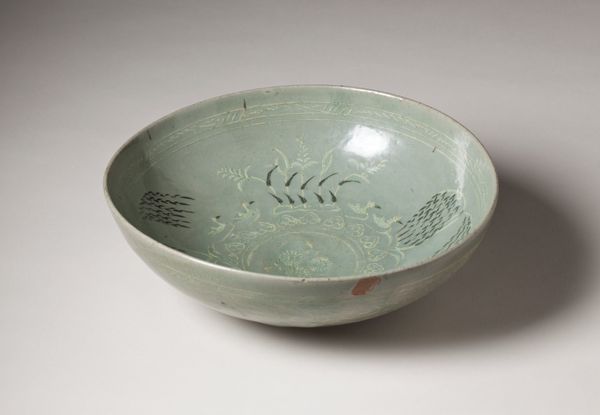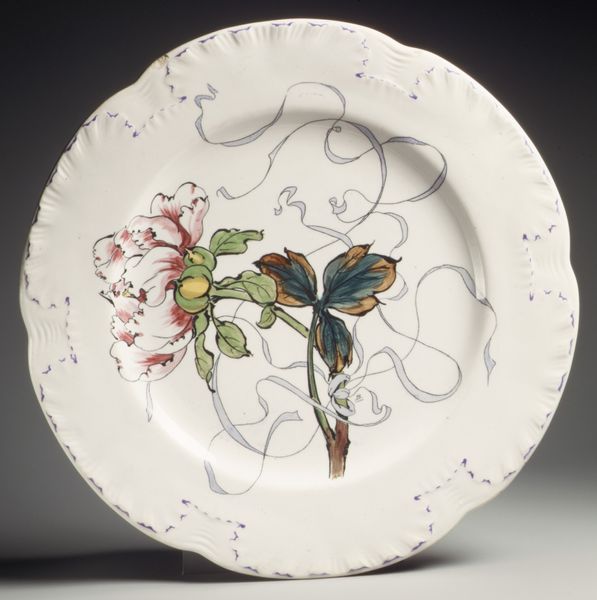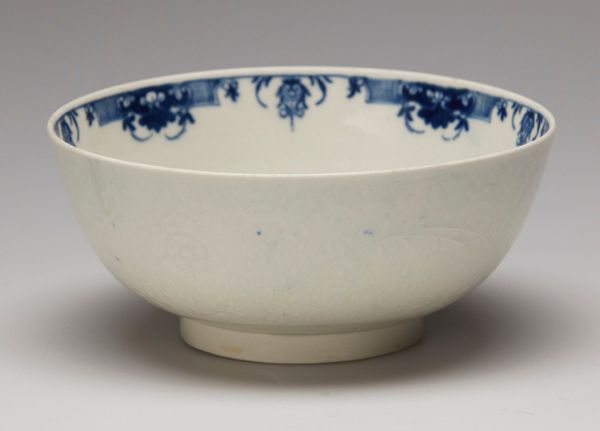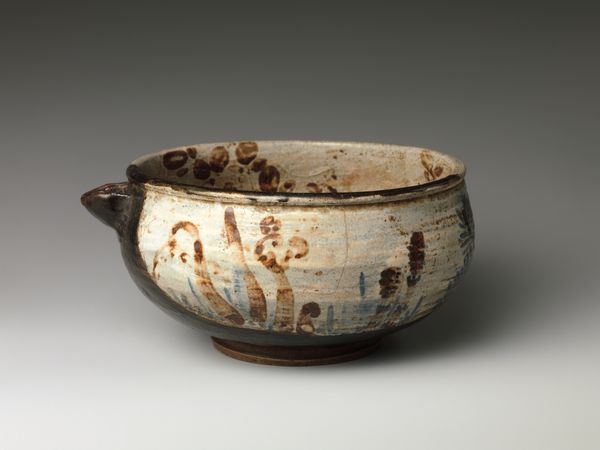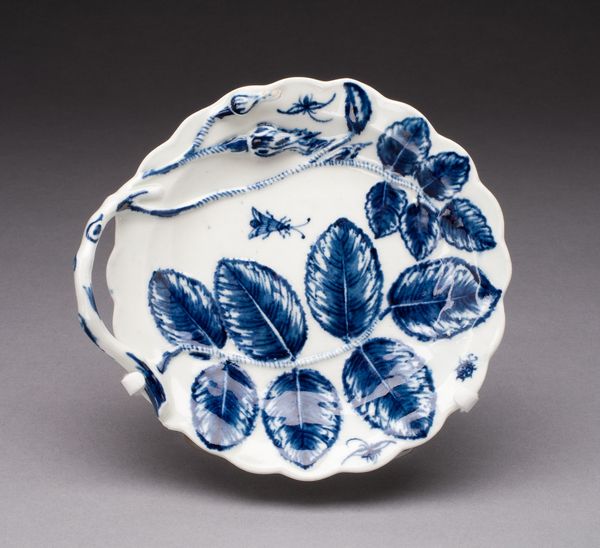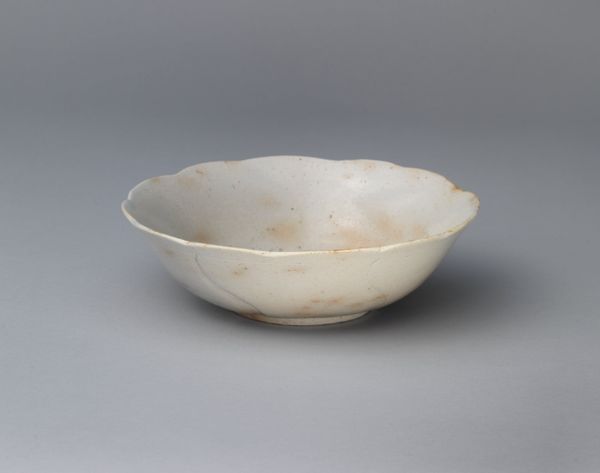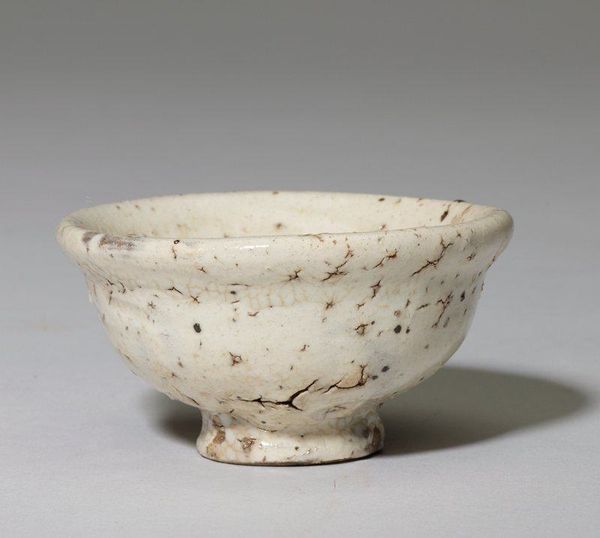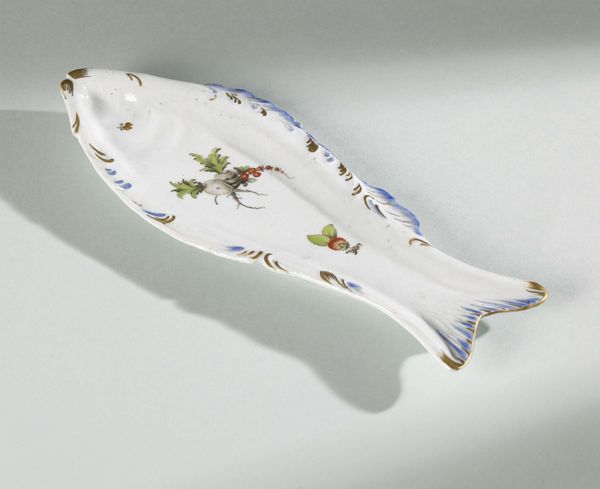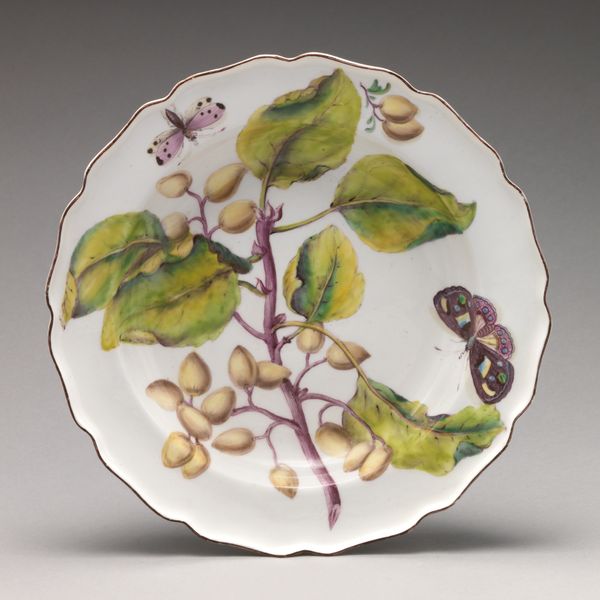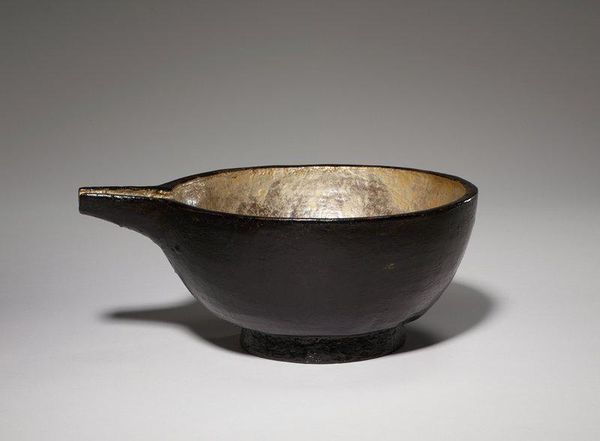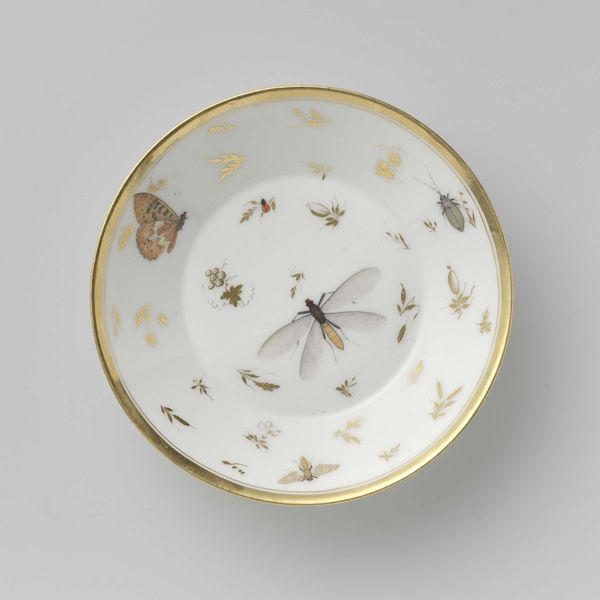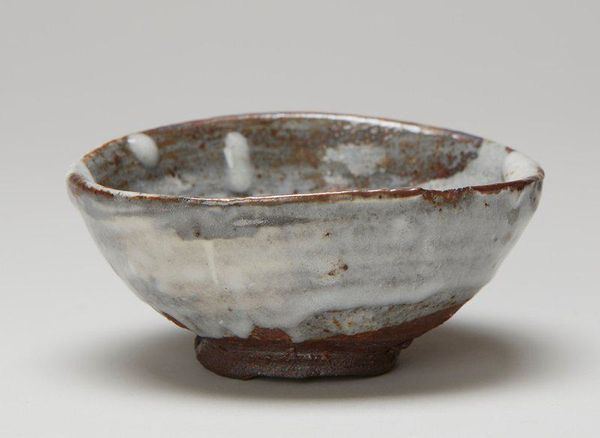
ceramic, porcelain, sculpture
#
ceramic
#
porcelain
#
sculpture
#
decorative-art
Dimensions: Length: 7 in. (17.8 cm)
Copyright: Public Domain
Curator: The work we’re looking at is simply titled "Dish" crafted sometime between 1881 and 1891. Edouard-Alexandre Dammouse created this intriguing porcelain object; it’s now held in the collection of the Metropolitan Museum of Art. Editor: Immediately, I'm drawn to the asymmetry, its irregular shape. And that extended handle adds an unexpected dimension, defying what I would consider traditional utility. The artist contrasts subtle indentations in the central field, alongside darker, almost gothic-feeling leaf patterns against the pristine glaze. It has a haunting beauty. Curator: Precisely, the irregularity, I think, suggests a conscious disruption of traditional domesticity. We have to consider that Dammouse was working in a period of massive shifts in social mores; anxieties surrounding gender roles, expectations for the decorative arts—all impacted artists and artisans deeply. The darker flora evokes Victorian mourning jewelry, suggesting perhaps a deeper commentary on loss or hidden grief within bourgeois life. Editor: I can see how one might decode that sentiment. However, look at how Dammouse utilizes those leaf patterns. Observe how they both cling and push away from the central lines of the dish itself, establishing a captivating visual tension, really underscoring the sculptural quality of the porcelain. This pushes the piece into the realm of aesthetic experience over mere functionality. The artist makes strategic compositional choices using this asymmetry. Curator: Of course, we can’t extract artistic interpretation completely divorced from context. Porcelain itself carries a weighty historical baggage related to colonialism and global trade—Dammouse's choice of medium is deliberate. How the artist renders them subverts botanical illustration in order to reflect on the artificiality of "natural" forms promoted as part of courtly life throughout history. It feels quietly subversive, an implicit challenge to class boundaries and prescribed social behaviours. Editor: Perhaps. Still, even considered through the lens of art history, one has to appreciate how effectively Dammouse orchestrates the dish’s various physical elements to create something genuinely engaging and distinct. It uses that extended handle as not simply a structural support, but as an aesthetic tool—a counterweight to that off-center design. The glossy surfaces also play a crucial role, as well, reflecting light in a way that enhances those dark floral accents. Curator: An intersection of so many influences, anxieties, and opportunities marked the end of the 19th century. "Dish" feels reflective of so much change, and it makes you reconsider even the simple utility of this art. Editor: Agreed; a testament to the object's enduring intrigue. We're forced to explore the intricacies woven within what otherwise presents itself as an ordinary form.
Comments
No comments
Be the first to comment and join the conversation on the ultimate creative platform.
